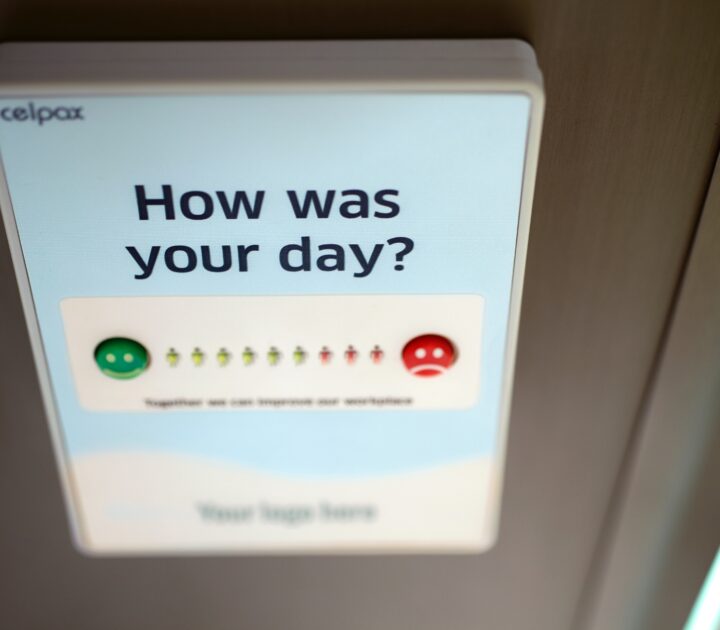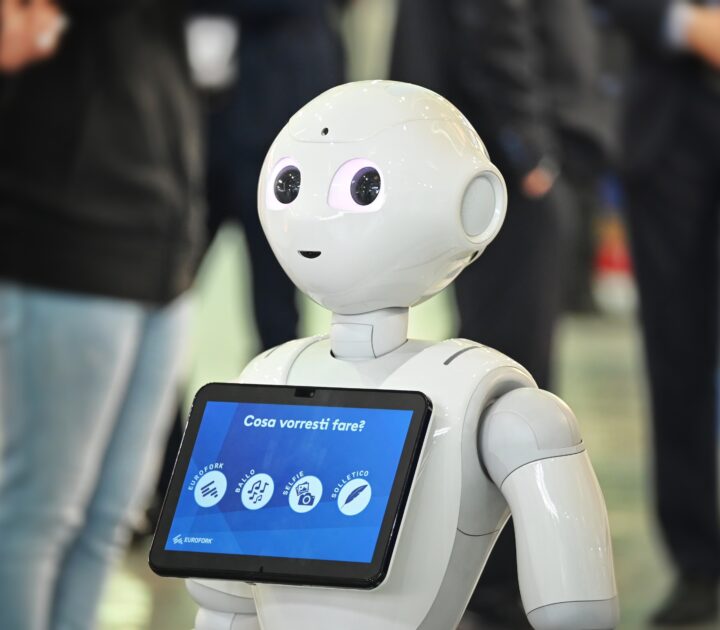
In the field with HRSD
At a glance
- To become more customer centric and align with the country’s Vision 2030 goals, Saudi Arabia’s Ministry of Human Resources and Social Development (HRSD) set up a Customer Experience (CX) deputyship, headed by a CX expert with private sector experience.
- The CX deputyship created a CX transformation strategy, which was an integral part of the ministry’s overall strategy, and two internal committees ensured the necessary support.
- In only three years, HRSD’s progress in improving CX was recognized by the Saudi government and by several awards from the Customer Experience Professionals Association.
- Continued CX progress would require a culture shift to enable collaboration across silos and enhance bottom-up initiatives.
Saudi Arabia’s Ministry of Human Resources and Social Development (HRSD) was created to manage public and private sector labor markets in an integrated fashion and to improve access for socially disadvantaged groups to services and benefits. It has become one of the largest and most important government entities in the country, with a broad remit enabling it to serve most individuals and organizations in Saudi Arabia.
The Saudi government launched Vision 2030 in 2016 to diversify the economy and reduce the country’s dependence on the oil and gas sector. HRSD was expected to help achieve key Vision 2030 goals including boosting employment among Saudi nationals, modernizing the social welfare system and increasing the private sector’s contribution to the economy. To serve its customers and beneficiaries more effectively, the ministry had to become more customer centric and improve its customer experience (CX) – i.e. the total experience that customers have when engaging with the organization.
THE BROADER ISSUE
Government organizations, public sector entities and non-profits can find it challenging to become customer centric because they tend to be the monopoly provider and so do not have to worry about losing customers. The lack of a profit motive can also reduce their incentive to become customer centric. However, these organizations do need to serve their customers more effectively to achieve their social impact objectives. Within this context of clashing incentives, new approaches are needed.
A FRESH APPROACH
Position CX within the organization’s overall strategy
HRSD began by developing an overall strategy so that the ministry had a common vision and clear strategic priorities. Eight change initiatives were put in place as part of this, one of which was CX transformation. The CX strategy was clearly connected to the seven others in its potential to transform how the HRSD served its customers and beneficiaries, something that affected the lives of thousands of people daily. Succeeding with CX would help the ministry reach its larger goals.
Allocate the right resources
To lead the CX transformation, HRSD set up a CX deputyship (or department) in 2019, the first for any Saudi government entity. It appointed Mohammad Al Jasser – who had previous top management experience in the private sector and an MBA in marketing with a focus on customer experience – and brought in three senior executives with deep CX expertise from outside the ministry. This ensured that CX received the focused attention that was required if significant improvements were to be achieved.
Ensure internal stakeholders are involved
While developing its CX strategy, the CX deputyship held extensive consultations within the ministry, especially with the deputy ministers who led the 18 deputyships. This helped to educate the ministry’s leadership about the importance of improving CX and began the process of building support within the ministry.
The ministry set up two committees – a steering committee headed by the minister to set the overall CX direction and a CX executive committee led by Al Jasser to oversee the implementation of the CX strategy – as well as a CX Centre of Excellence. The goal was that each of the 18 deputyships would create a dedicated team to work with the newly established CX Centre. This was initially a challenge as the deputies worried about who might be found at fault for any shortcomings identified. Al Jasser’s private sector experience came in handy because he knew how to work from the bottom-up to ensure that every deputyship understood that the CX team wasn’t interested in playing a blame game but instead wanted to actively work together to improve CX.
Use pilot projects to deliver quick wins and build support
While the CX deputyship was developing its strategy, it used pilot projects to build momentum and support for CX improvement within the ministry. It launched an initiative to use customer research data more effectively to identify and address challenges and issues, working closely with the other deputyships within the ministry. It also launched initiatives to solve immediate problems, such as setting up internal call centers to ensure that customers were served in a timely manner.
“We did a maturity assessment and found that we were still in the beginning stages of CX. We were not even close to delivering solid customer experiences.”
– Abdulaziz Al Shamsan, Deputy Minister for the CX Deputyship
One of the first things the CX deputyship did was to carry out a maturity assessment to establish where HRSD stood on a number of CX capabilities. Results of the assessment showed that the ministry’s CX skills were still at the beginner stage, and it had a lot of work to do. This provided a solid foundation for the CX strategy that was developed and allowed progress to be measured over time.
The ministry also used other ways to showcase its CX progress. Within Saudi Arabia, it moved up the scale on the central government’s CX maturity index. Internationally, it participated in the International CX Awards, which allowed it to benchmark itself against a broader landscape of CX. Demonstrating progress in these ways helped to maintain support for the CX transformation within the ministry.
DID IT WORK?
HRSD made significant improvements in CX by 2022, three years after it launched its CX transformation initiative. It moved from level 2 on the Saudi government CX maturity index to level 5 (the highest). Internationally, Al Jasser was awarded the 2020 CX Leader of the Year Gold Award by International CX Awards, which also awarded the ministry the Bronze Voice of Customer award for 2020.
However, CX transformation remained limited to pockets within the ministry with supportive leaders. Transforming CX across the ministry would require a new mindset and cultural shift.
“I could sense the discomfort and defensiveness in the room during our initial meetings with different deputyships. The tension slowly eased when they saw that we were not stopping at the level of reporting but were working hand in hand with the product or service owner to alleviate their challenges.”
– Mohammad Al Jasser, Assistant Minister for Shared Services
TAKEAWAYS
Achieving social goals requires becoming more customer centric and improving customer experience. There is a mistaken belief that customer centricity and customer experience are only important for profit-making organizations focused on financial goals. However, they are equally important for organizations that are focused on achieving social goals.
Educating internal stakeholders and showing them how improving CX will contribute to achieving the organization’s goals is required to build support. Leaders within organizations may have had little previous exposure to CX and may not understand how it contributes to achieving organizational goals. As a result, they may resist any or all CX improvement initiatives, considering them irrelevant and an unnecessary distraction. Educating them about CX and demonstrating how it contributes, in concrete ways, to achieving the organization’s goals is important to securing support.
Measuring progress and securing external validation is necessary to maintain internal support for CX improvement initiatives. Establishing a CX performance baseline allows organizations to demonstrate in concrete terms the impact of CX improvement initiatives. External validation from sources outside the organization can be especially powerful in demonstrating progress and can help to maintain support for CX improvement among the organization’s leadership.
Culture change is key to broad-based CX improvement. Achieving broad-based improvements in customer experience requires wide-ranging changes in organizational processes across organizational silos. This requires leaders to be less protective of their territory and influence. The change required is often driven from the bottom-up, which can feel chaotic and be difficult for leaders to accept since they no longer feel as in control.
This article is based on IMD case IMD-7-2403, available from The Case Centre at www.thecasecentre.org
Research Information & Knowledge Hub for additional information on IMD publications
In this interview with Piyush Gupta CEO of DBS, we explore the bank’s market-oriented transformation journey from an underperforming mainly local S...
Research Information & Knowledge Hub for additional information on IMD publications
in AMS Review 21 May 2024, ePub before print, https://doi.org/10.1007/s13162-024-00278-6
Research Information & Knowledge Hub for additional information on IMD publications
Research Information & Knowledge Hub for additional information on IMD publications
Research Information & Knowledge Hub for additional information on IMD publications
in I by IMD Magazine March 2024, no. 13, pp. 44-47
Research Information & Knowledge Hub for additional information on IMD publications
Research Information & Knowledge Hub for additional information on IMD publications
Research Information & Knowledge Hub for additional information on IMD publications
Research Information & Knowledge Hub for additional information on IMD publications
Research Information & Knowledge Hub for additional information on IMD publications
Research Information & Knowledge Hub for additional information on IMD publications







